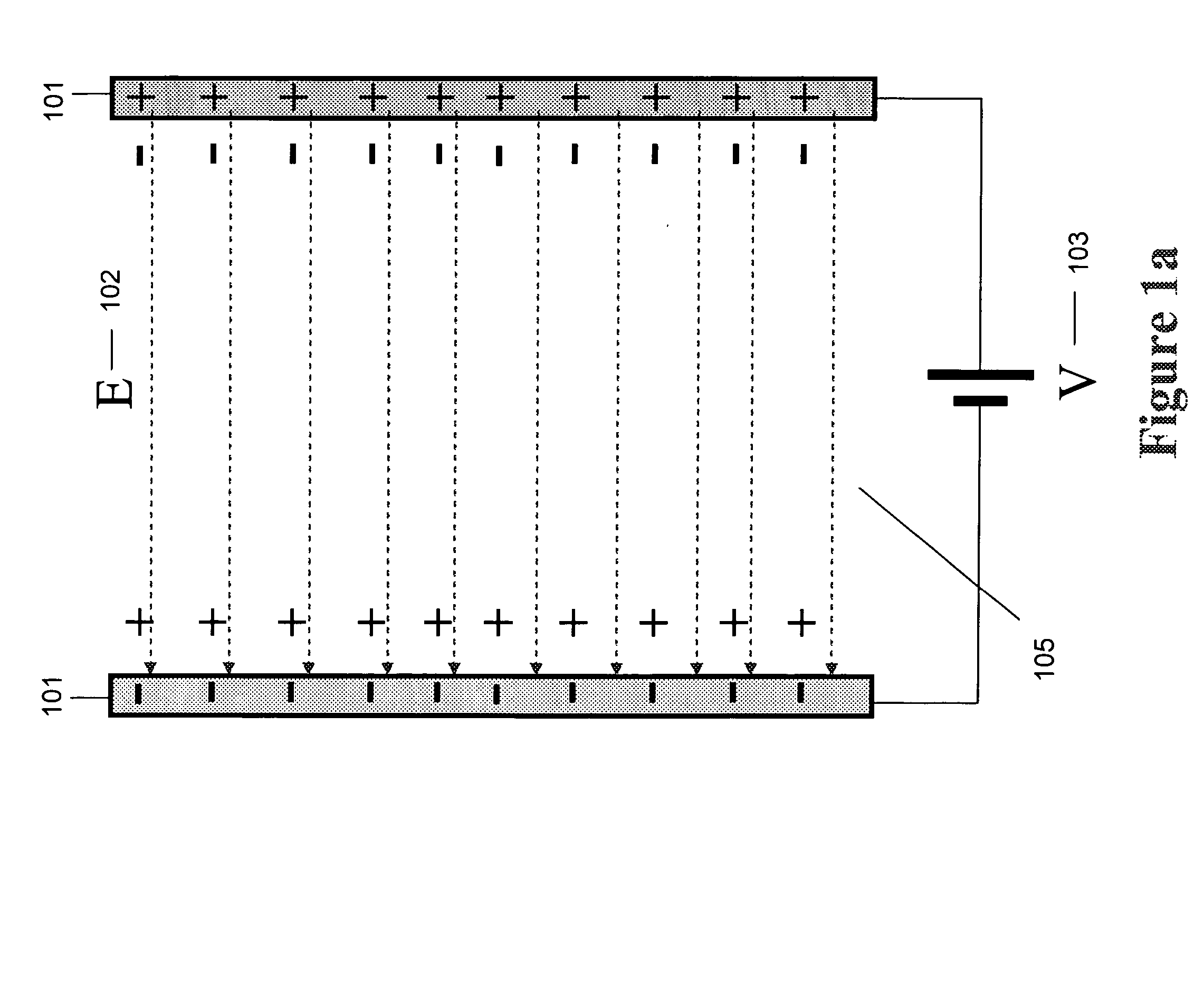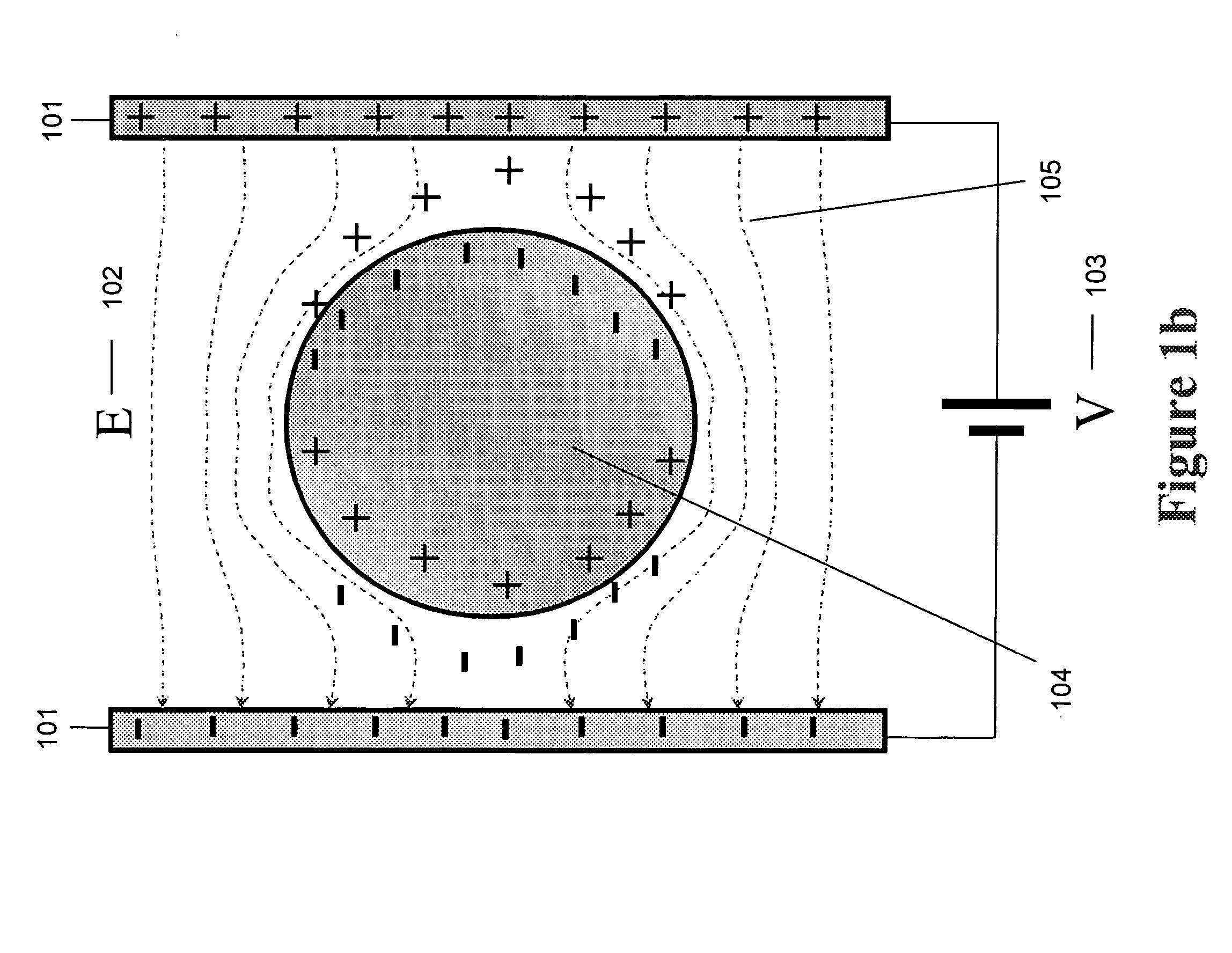Method and apparatus for low quantity detection of bioparticles in small sample volumes
a bioparticle and small sample volume technology, applied in the field of bioparticle detection, can solve the problems of difficult to see these particles with the naked eye, not always possible, and inability to use color change as an indicator
- Summary
- Abstract
- Description
- Claims
- Application Information
AI Technical Summary
Benefits of technology
Problems solved by technology
Method used
Image
Examples
Embodiment Construction
[0024] The threshold of detection of bioparticles can be improved using dielectrophoresis to move, mix and concentrate a few fluoro-tagged bioparticles into the field of view of the sensor that is small and does not have any focusing optics.
[0025] All particles in nature are made up of molecules. Molecules in turn have an electronic structure. In each particle (nanoparticle, virus, bacteria, cell, tagging antibody, antigen, DNA, RNA and protein) some molecules have loosely bound outer orbit electrons that are free to move about the confines of the particle. These are called free electrons. The degree of mobility of these electrons gives the particle a certain electrical conductivity. Metals have high conductivity, as these free electrons are very free and can be used to carry current. In semiconducting or insulating particles these free electrons allow an external electric field to convert the particle into a dipole. A dipole is a particle in which the free charg...
PUM
 Login to View More
Login to View More Abstract
Description
Claims
Application Information
 Login to View More
Login to View More - R&D
- Intellectual Property
- Life Sciences
- Materials
- Tech Scout
- Unparalleled Data Quality
- Higher Quality Content
- 60% Fewer Hallucinations
Browse by: Latest US Patents, China's latest patents, Technical Efficacy Thesaurus, Application Domain, Technology Topic, Popular Technical Reports.
© 2025 PatSnap. All rights reserved.Legal|Privacy policy|Modern Slavery Act Transparency Statement|Sitemap|About US| Contact US: help@patsnap.com



